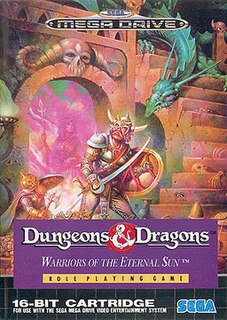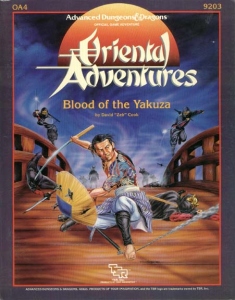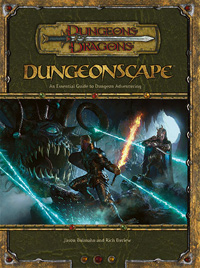In the Dungeons & Dragons fantasy role-playing game, Psionics are a form of supernatural power similar to, but distinct from, arcane and divine magic.
The Thief, Burglar, Scoundrel, or Rogue is a character class in many role-playing games, including Dungeons & Dragons, Final Fantasy, World of Warcraft and many MMORPGs. Thieves are usually stealthy and dexterous characters able to disarm traps, pick locks, spy on foes, and perform backstabs from hiding.
The druid is a playable character class in the Dungeons & Dragons fantasy role-playing game. Druids wield nature-themed magic. Unlike the cleric, druids do not have special powers against undead and, in some editions, cannot use metal armor. Druids have a unique ability that allows them to change into various animal forms, and various other qualities that assist them in natural settings.
Several different editions of the Dungeons & Dragons (D&D) fantasy role-playing game have been produced since 1974. The current publisher of D&D, Wizards of the Coast, produces new materials only for the most current edition of the game. Many D&D fans, however, continue to play older versions of the game and some third-party companies continue to publish materials compatible with these older editions.
The bard is a standard playable character class in many editions of the Dungeons & Dragons fantasy role-playing game. The bard class is versatile, capable of combat and of magic. Bards use their artistic talents to induce magical effects. The class is loosely based on the special magic that music holds in stories such as the Pied Piper of Hamelin, and in earlier versions was much more akin to being a Celtic Fili or a Norse Skald, although these elements have largely been removed in later editions. Listed inspirations for bards include Taliesin, Homer, Will Scarlet and Alan-a-Dale.
The fighter is one of the standard playable character classes in the Dungeons & Dragons fantasy role-playing game. A fighter is a versatile, weapons-oriented warrior who fights using skill, strategy and tactics.
In the Dungeons & Dragons role-playing game, game mechanics and die rolls determine much of what happens. These mechanics include:

Dungeons & Dragons: Warriors of the Eternal Sun is a role-playing video game developed for the Sega Genesis in 1992 by Westwood Associates. The game tells the story of a party of adventurers who have been transported to an unknown world and must survive against its hostile inhabitants while learning about their new home and seeking allies. It is based on the Dungeons & Dragons (D&D) game rules, and uses creatures and themes from the D&D Hollow World campaign setting, such as Blacklore elves, the Azcans, beastmen, Malpheggi lizardmen, and dinosaurs.
The wu jen is a playable character class in the Dungeons & Dragons fantasy role-playing game.
The shugenja or shukenja is a playable character class in the Dungeons & Dragons fantasy role-playing game.

Blood of the Yakuza is a module in the Oriental Adventures subset of the Advanced Dungeons & Dragons Forgotten Realms product line.
The Assassin is a character class common to many role-playing games, often but not always representing the historical Assassin or Ninja. Such characters typically combine combat ability with strong stealth skills, and specialise in defeating an enemy without becoming involved in a protracted melee. Assassins first appeared in many role-playing games including Dungeons & Dragons and its rivals, which influenced later appearances in video games. In many of these, the Assassin class is only available to the player after having advanced in another class, such as the Thief.

Dungeonscape is a supplement for the 3.5 edition of Dungeons & Dragons.

Dungeoneer's Survival Guide is a supplement to the Dungeons & Dragons fantasy role-playing game. The book was written by Douglas Niles, and published by TSR, Inc. in 1986.

Dwellers of the Forbidden City is an adventure module, or pre-packaged adventure booklet, ready for use by Dungeon Masters in the Dungeons & Dragons (D&D) fantasy role-playing game. The adventure was first used as a module for tournament play at the 1980 Origins Game Fair, and was later published by TSR in 1981 for use with the first edition Advanced Dungeons & Dragons rules. The module was written by game designer David "Zeb" Cook, who partly ascribes his hiring by TSR to his work on this module. In the adventure, the characters are hired to find an object taken to a lost oriental-style city, which has been taken over by a cult of snake-worshipers, the yuan-ti, and their servants, the mongrelmen and tasloi. The module was ranked as the 13th greatest Dungeons & Dragons adventure of all time by Dungeon magazine for the 30th anniversary of the Dungeons & Dragons game in 2004.

Lords of Darkness is the name of two accessories for the fictional Forgotten Realms campaign setting for the Dungeons & Dragons fantasy role-playing game.











